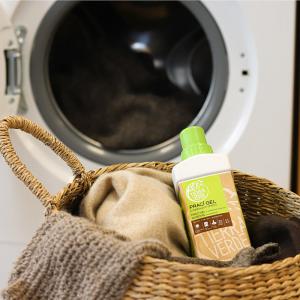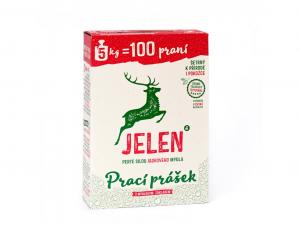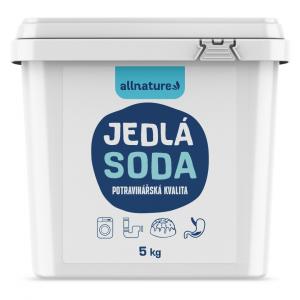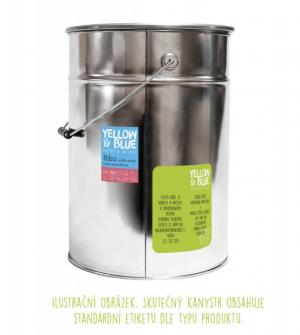
How to Properly Wash Clothes According to Label Symbols

In today's fast-paced world, where we juggle hundreds of different things every day, it's easy to overlook something as basic as the washing symbols on our clothes. Yet, these small icons on the inner labels of our favorite clothing pieces hold significant importance. They are the key to the longevity of our garments, preserving their appearance and quality. How often have you thought about what all those symbols actually mean? And why is it so important to interpret them correctly?
What are washing symbols?
Washing symbols are pictograms found on the labels of clothing and textiles. They are designed to provide clear and simple care instructions for garments. These symbols are universal and used worldwide, meaning no matter where you purchased your clothing, the care instructions should be easily understandable.
Try our natural products
Basic Symbols and Their Meaning
There are several basic categories of washing symbols, each with several variations:
-
Washing: Washing symbols indicate whether a garment can be machine washed or if it needs to be hand washed. The symbol of a washing machine is usually accompanied by a number that indicates the maximum washing temperature. A pictogram of a hand in a bowl of water means hand washing.
-
Bleaching: A triangle is the symbol for bleaching. If it is empty, bleaching is allowed. A triangle with a cross inside indicates bleaching is prohibited.
-
Drying: A square with a circle inside indicates the possibility of tumble drying. Dots inside the circle indicate the maximum temperature that can be used. A square with a cross or line means no tumble drying or a recommendation to dry in the air.
-
Ironing: The iron symbol shows whether the garment can be ironed. Dots on the iron indicate the maximum ironing temperature. An iron with a cross means no ironing.
-
Professional cleaning: A circle with a letter inside indicates whether the garment can be dry cleaned. The letters P and F denote different types of dry cleaning, while W means wet cleaning.
Try our natural products
Why is it important to follow the instructions on the labels?
Many people think that the instructions on the labels are too strict or unnecessary. However, ignoring these recommendations can lead to damage to the clothing, loss of color, distortion of shape, or even shrinkage. Properly following these instructions can extend the life of your garments, which not only saves money but is also environmentally friendly by reducing waste.
Common washing mistakes
One of the most common mistakes is washing at too high a temperature. Many people believe that a higher temperature means better cleaning, but it can actually damage delicate fabrics and cause colors to fade. Another common mistake is using too much detergent, which can leave residues on clothes and irritate the skin.
Try our natural products
Understanding washing symbols doesn't have to be complicated. Just look at the symbols and follow the instructions. If you're unsure what a symbol means, there are many online resources and apps that can help.
The Importance of Eco-Friendly Washing
Nowadays, it's important to also think about ecology. Eco-friendly washing involves using gentle detergents, washing at lower temperatures, and avoiding excessive use of the dryer. Such practices not only protect our clothes but also reduce our environmental impact.
Practical Tips for Washing
-
Sorting laundry: Sorting laundry by colors and materials is a basic step to preserve the appearance of clothing. White laundry should be washed separately from colored to prevent undesirable color transfer.
-
Using the right detergent: There are specific detergents for each type of fabric. For example, delicate clothing requires a gentle detergent, while sportswear needs a detergent that removes odors and bacteria.
-
Optimal washing temperature: Most modern detergents are effective even at lower temperatures. Washing at 30°C or 40°C is usually sufficient for regular dirt and saves energy.
-
Correct detergent dosing: Excessive detergent can leave residues on clothes and damage the washing machine. Always follow the recommended dosing on the detergent package.
-
Washing machine maintenance: Regular cleaning of the washing machine, including the filter and seal, ensures its longevity and efficient operation.
Try our natural products
Care for Specific Materials
Each material requires specific care. For example, cotton is durable and can be washed at higher temperatures, while silk is delicate and requires gentle hand washing. Wool can felt if not washed properly, so it's important to use special programs and detergents designed for wool.
How many times have you ruined your favorite t-shirt or sweater just because you ignored the washing symbols? Let's learn together how to properly care for our clothes and extend their lifespan. It's not just about saving money, but also about sustainability and caring for our planet.
Washing symbols are not just unnecessary complications on the inner labels of our garments. They are valuable guides that help us care for our clothes and keep them in the best condition. Following these instructions is not just a matter of aesthetics, but also thriftiness for our wallets and the environment. Next time you wash your clothes, take a moment to look at the label and follow its instructions. Your clothes will thank you with long life and great appearance.























